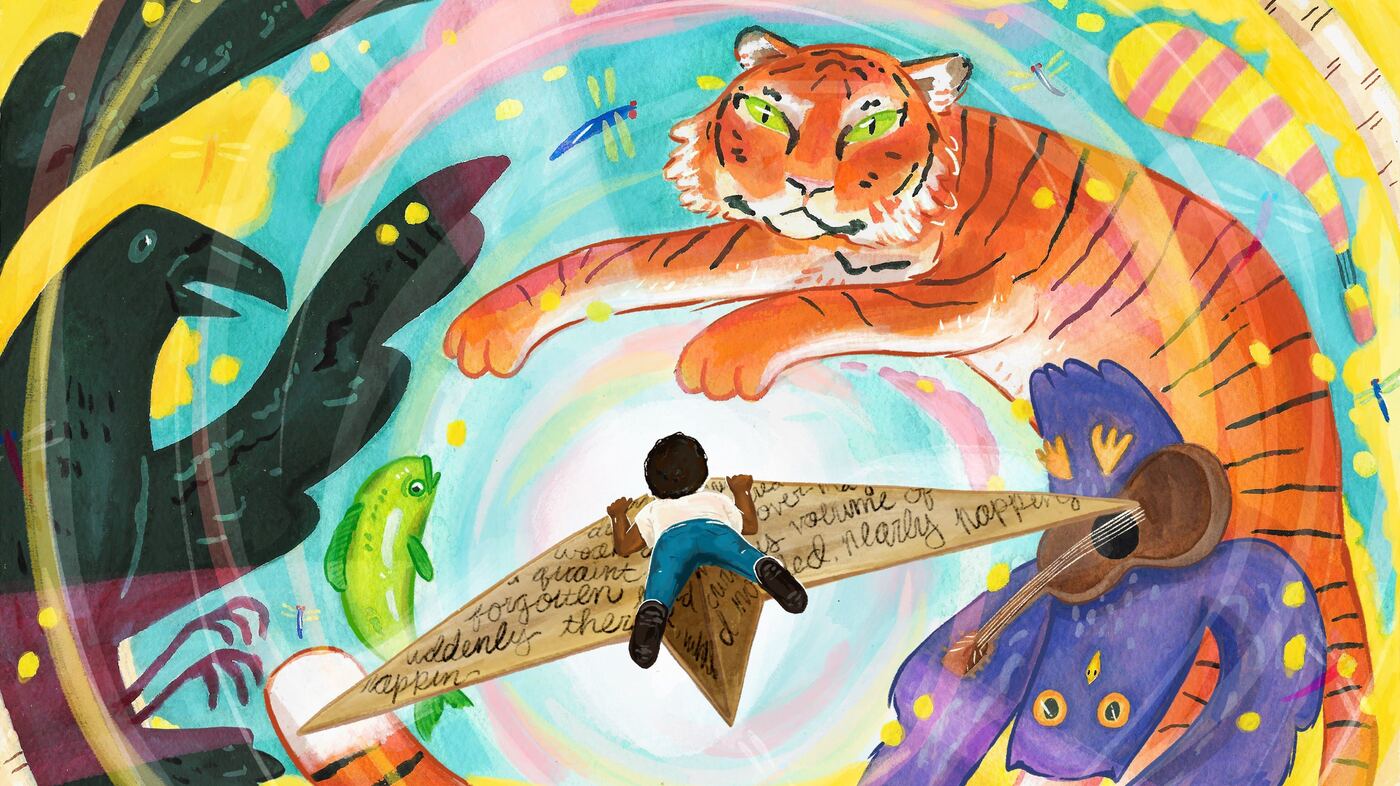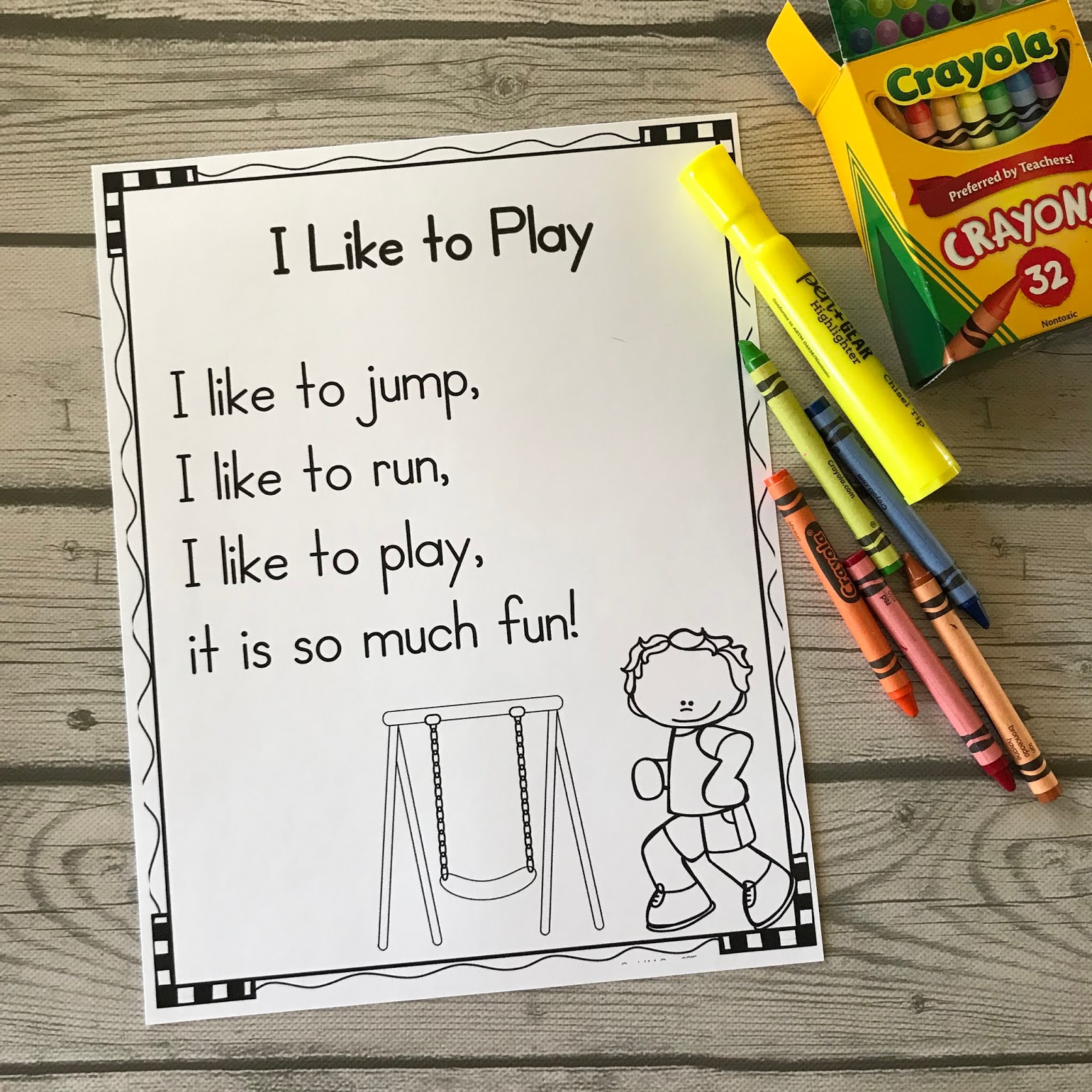
image via npr
Here’s a neat piece from Reading Partners about how teachers can use poetry with emerging readers to support and further develop their reading skills. And by poetry here I mean the rollicking, rhyming kind, not the staring out the window at the rain kind. Using poetry in this way has a number of benefits for students.
First, poetry is often very enjoyable for younger children. Because of the rhythm and rhyme it has a song-like quality that aids with memorization of text, allowing kids to “read” books before they can actually read. Any kind of book with a specific, repetitive structure can do this, not just poetry. A big favorite with kids is an old standby, Blue Hat, Green Hat by Sandra Boynton, which doesn’t rhyme, but has a highly structured pattern on each spread: “Blue hat, green hat, red hat, OOPS!” Once kids know the pattern, it becomes easy to “read” independently. Patterns like this are also great for emerging readers and writers to replicate through writing/dictation and drawing. All of this is very motivating for kids and motivated is what we want them to be when they sit down to read.
Secondly, the sound quality, the rhythm and rhyme, help children begin to recognize and predict patterns in language even when the words themselves don’t immediately appear to be similar. They learn cheer rhymes with tear, and pier, and mere. They learn that gruff rhymes with tough and row rhymes with though and toe. They can predict how to pronounce words based on the rhyme structure of the poem even if they’ve not seen the word before. This is huge for new readers, because getting stuck on decoding something interrupts fluency and interrupted fluency can derail comprehension.

Here’s an authentic text rhyming two unfamiliar words, hollow and wallow, with a familiar word, follow. Also notice how it rhymes mud and blood, which are spelled very differently — a good clue to the reader on pronunciation.
Poetry can be instrumental in building vocabulary. Some rhyming words may be ones kids don’t know, but in poetry these are often embedded with words they do know and that helps them access their prior knowledge and gives them something to attach the new learning to. Flipping things around and having kids write poetry — particularly rhyming poetry with rhythm and meter but also poetry with defined linguistic structure, like Haiku — builds understanding in further ways like understanding syllables and knowing where to stress a word or a particular syllable correctly. That’s another skill that can help with decoding.
Beyond reading, poetry lends itself well to call-and-response lessons where the teacher says one or more lines and the students respond. Leveraging speaking skills like this boosts retention for kids. And having kids write using specific rhythmic patterns can get them thinking about language as something to build with, to turn around in their minds until they get the right fit. The act of creating a poem requires all the other thinking skills — analysis (words that fit the pattern) and evaluation (the best words for the pattern), but also application (deciding where to put words) and understanding (what the words mean and how they make us feel) and remembering (all the possible words the child knows). Anything that requires that level of cognitive demand is beneficial for kids and inherently more engaging.

Notice how this poem loses the rhythm in the last line? That’s because it’s a created text designed to use Kindergarten sight words.
Poetry supports Culturally Responsive Instruction. Teachers need only take the time to seek out diverse poets. There are many wonderful Black, Hispanic/Latinx, Native American, and Asian poets at every ability level for kids. This allows kids of color to see themselves in the poets, but also to see themselves as poets, crafting language to express their ideas. And it lends itself to an array of cross-content integration with art, music, history — even science and math.
My one caveat about poetry is this: it’s critical to use published poets and recognized authors. In the course of our audits, we see a lot — a lot — of poetry that comes from internet resource sites (like Teachers Pay Teachers) that is either written by teachers or from unspecified sources. We call this Created Text and its quality is extremely variable, ranging from okay to abysmal. Authentic Texts from published poets and authors (remember, a lot of picture books are written in verse) use better, higher level vocabulary and the finished product has more craft and aesthetic value than something written for a worksheet that conforms to a particular reading level. Poetry written specifically for textbooks can be similarly mediocre. Find the good stuff , the authentic stuff, and use that.
If you need help finding great poetry or poets to include in your district’s curriculum, CMSi has a list of poetry resources and poetic novels broken out by grade level available on our Free Resources page. You can also find a great list of poetry books for elementary kids with lots of diverse authors and subjects here. There’s also a nice article from NPR on how to get into poetry that can serve as a resource for teachers. It takes some of the pressure off “getting” poetry and would be applicable to classroom instruction. And finally, here’s an article on how to connect poetry to art.
